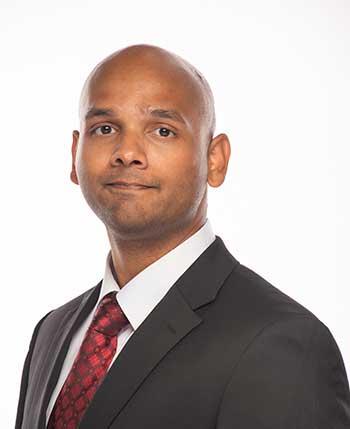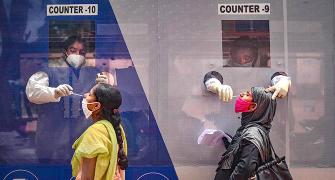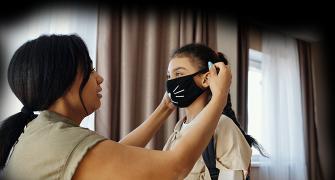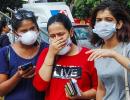'They should always be used in combination with social distancing and hand washing and other recommendations.'

It has been known for a while that N95 respirators and surgical masks are effective in curtailing the spread of a variety of viruses.
But most people today wear face masks that do not meet those exacting standards.
The matter should be of some urgency to Dr Siddhartha Verma, since where he works, the Florida Atlantic University, is located at Boca Raton, not far from Miami, where the coronavirus epidemic is raging.

Right: A laser sheet illuminates a puff emerging from the mouth. Photograph: Kind courtesy Siddhartha Verma, Manhar Dhanak and John Frankenfield/Physics of Fluids
Dr Verma and his team decided to compare the effectiveness of the face masks actually in use.
The researchers replicated coughs by squirting jets of fluid through the mouth of a mannequin using a variety of masks or none at all and came up with some interesting results.
They created an image using light from a green laser to capture images.
They found that a commercial mask (CVS cone) limited the jets going out to eight inches.
A stitched mask did even better, limiting the spray to 2.5 inches.
But a folded cotton handkerchief did worse (1.25 feet), while a bandana fashioned from an elastic T-shirt let droplets fly out 3.6 feet, crossing the WHO recommended social distance limit of 3 feet.
A single bandana-style covering provides more protection than no mask or a thin kerchief, but it cannot compete with the protection a well-fitted stitched mask can provide, Dr Verma tells Rediff.com Senior US Contributor P Rajendran.
"But if you use better fabric and a better fit that tends to decrease the spread significantly."

He agrees that the N95, the KN95 or other similar forms of protections are nominally even better than cloth masks.
"Medical professionals are actually trained to fit it very well," Dr Verma says.
"But the general public may not be as knowledgeable about that. So no matter what type of mask we use there's always a danger, some degree of leakage."
He himself uses a nanofibre mask that one company gave the team for testing.
He points out that "any sort of mask you use, whether it be cloth based, or an N95, there will be some leakage from the sides and from the top. So, there will always be some spread. The idea is to try and minimise them."
Dr Verma says the best practice was to understand the limitations involved, and use a combination of methods to avoid infection.
"Nothing is 100 percent effective," Dr Verma says.
"Masks definitely are not 100 percent effective. So they should always be used in combination with social distancing and hand washing and any other recommendations."
The small leakage is not riskier than going without a mask. Not using a mask is the riskiest scenario.
"{When there is] no mask use or no covering at all we saw the droplets would travel eight feet on average," Dr Verma says. "And they could go even up to 12 feet in most extreme cases."
He agrees that it may even go further than 12 feet because of the limitations of the testing space.
"That's the maximum length we had. So it might go further, but I cannot tell you for sure." he says.
Dr Verma says the smallest droplets hanging in the air perhaps form the biggest threat.
"They are actually more dangerous... The larger droplets are heavy, so they fall down to the ground very quickly," he said, pointing out that the smallest droplets could stay suspended for minutes, even hours.
 IMAGE: Dr Siddhartha Verma.
IMAGE: Dr Siddhartha Verma.Dr Verma, the son of Gayatri and Mani Shankar Verma, grew up in Patna, but, after high school, went to Georgia Tech to earn his bachelor's degree in aerospace engineering, and his master's and PhD at Caltech (California Institute of Technology).
It was at Caltech that he began working on fluids.
While he continues to work on basic research, he is also trying to apply his work to address the pandemic.
"We're expanding the study," Dr Verma says, and gave the example of how the team's research could have an impact on offices:
Where exactly you place a vent can make a difference in how efficiently you can extract the air out, how quickly you can get the germs away from people. There are many factors that affect [this]."
Dr Verma aims to explore them, and to use his understanding of air as a fluid to get viruses safely away from those leaky masks and noses.
The research was published June 30 in the journal Physics of Fluids.
Feature Production: Ashish Narsale/Rediff.com










